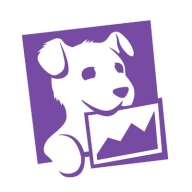

Datadog and BlueCat Infrastructure Assurance compete in infrastructure monitoring and management. Datadog often leads with sophisticated data analytics and user satisfaction with pricing and support, while BCIA's strong infrastructure insights and feature set justify its higher investment for some users.
Features: Datadog emphasizes robust monitoring with advanced data analytics, seamless integration across platforms, and sophisticated alerting systems. It provides extensive logging and real-time insights, appealing to organizations seeking comprehensive IT monitoring. BCIA offers detailed network infrastructure insights with enhanced control and security, focusing on network analysis depth.
Ease of Deployment and Customer Service: Datadog features a cloud-based deployment, simplifying setup and offering responsive customer service for troubleshooting. BCIA requires more extensive initial configuration, particularly within networking environments, but its specialized support handles complex infrastructure queries efficiently.
Pricing and ROI: Datadog offers a flexible pricing model with potentially lower starting costs, delivering strong ROI through extensive IT functionality. BCIA may involve higher initial costs but promises substantial ROI where network assurance and control are priorities, appealing based on specific infrastructure needs.


Datadog is a comprehensive cloud monitoring platform designed to track performance, availability, and log aggregation for cloud resources like AWS, ECS, and Kubernetes. It offers robust tools for creating dashboards, observing user behavior, alerting, telemetry, security monitoring, and synthetic testing.
Datadog supports full observability across cloud providers and environments, enabling troubleshooting, error detection, and performance analysis to maintain system reliability. It offers detailed visualization of servers, integrates seamlessly with cloud providers like AWS, and provides powerful out-of-the-box dashboards and log analytics. Despite its strengths, users often note the need for better integration with other solutions and improved application-level insights. Common challenges include a complex pricing model, setup difficulties, and navigation issues. Users frequently mention the need for clearer documentation, faster loading times, enhanced error traceability, and better log management.
What are the key features of Datadog?
What benefits and ROI should users look for in reviews?
Datadog is implemented across different industries, from tech companies monitoring cloud applications to finance sectors ensuring transactional systems' performance. E-commerce platforms use Datadog to track and visualize user behavior and system health, while healthcare organizations utilize it for maintaining secure, compliant environments. Every implementation assists teams in customizing monitoring solutions specific to their industry's requirements.
We monitor all IT Infrastructure Monitoring reviews to prevent fraudulent reviews and keep review quality high. We do not post reviews by company employees or direct competitors. We validate each review for authenticity via cross-reference with LinkedIn, and personal follow-up with the reviewer when necessary.